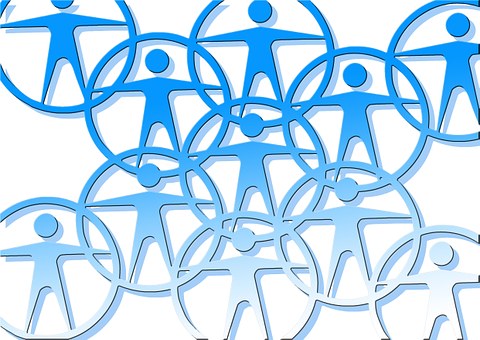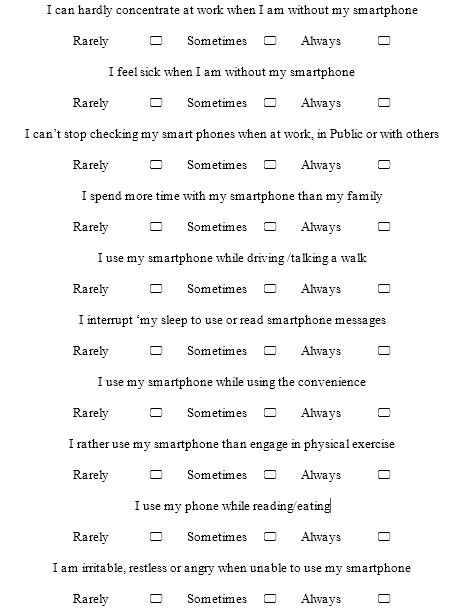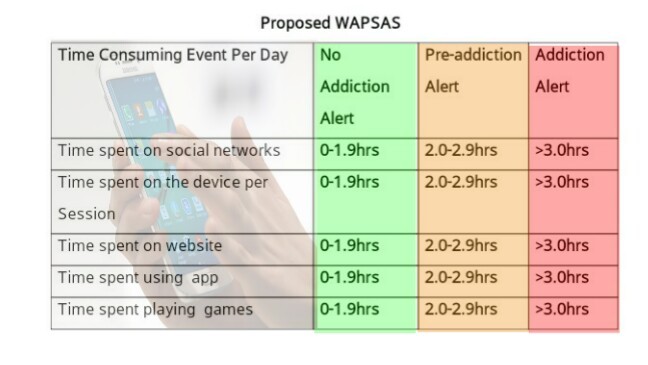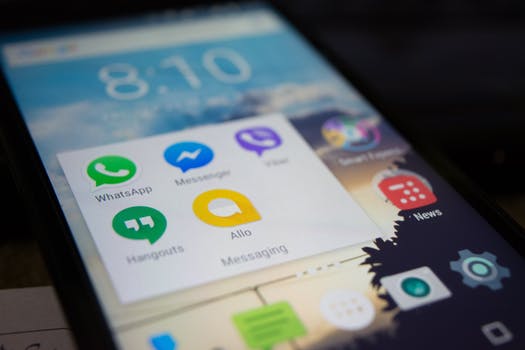A Geneva Challenge Entry
Technological advancements in the last two decades have transformed human interaction and relationships in a manner never seen in human history, this has provided the platform for man to push beyond boundaries and achieve dreams that were previously unfathomable.
Smartphones are an integral part of this revolution, they have become one of the most powerful and indispensable weapons for the advancement of commerce, innovation, and communication, a trend fueled by the proliferation in the use of social networking sites on the internet.
Smart Phone Addiction Definition
Smartphone addiction refers to a behavioral condition that involves an intense focus on a smartphone either through interactions on social media platforms, games or by using other applications within the phone. It is a compulsive disorder that negatively interferes with the personal life of the individual including his or her relationship with the wider environment, it results in a dependence syndrome that leads to the fear of being without a smartphone, a condition referred to as nomophobia.
Smartphone Addiction Statistics
Analysts have projected that over a third of the world’s population estimated at 2.53 billion will own a smartphone by 2018 while Smartphone shipments worldwide are expected to hit 1.71 billion by 2020. However, smartphone addiction has become one of the greatest challenges for employers and employees in the 21st century largely due to the increasingly personalized nature of new devices.
As more and more people replace their personal computers with smartphones as their preferable work platform, the time spent using these devices has been growing and affecting behavioral patterns across the globe. Addiction to smartphones and addiction to the internet are inseparable and their impact on behavioral and sound mental health including workplace relationships could have a huge impact on the development, productivity, and innovation of the working age population across the globe.
Globally, synergy amongst employees is gradually being replaced by a toxic relationship with the smartphone, a condition with a deleterious effect on mental and behavioral health. The tendency of these devices to destroy institutions and affect productivity has been consistently overlooked or ignored.
Mental Health Definition
Mental health is defined as a state of psychological, emotional, and social well-being in which every individual realizes his or her own potential, can handle the normal stresses of life, work productively with others, and is able to make a valuable contribution to his or her community. Good mental health status is very important for socio-economic development in any sector, this is because it is associated with higher productivity, innovation, better performance, consistency at work, and fewer workplace accidents. According to Bolton, P. A., Achieving improved global health and development requires addressing problems causing disability, particularly mental health problems among populations in which common mental disorders are frequent due to deprivation.
The international labor organization defines the working age population as persons aged 15 years and older, although this may vary slightly from country to country.
Theoretical Foundation Of Smart Phone Addiction
Behavioral theory or Behaviorism provides an important insight into the phenomenon of smartphone addiction. The theory seeks to explain why behaviors change, and how the impact of critical factors such as personal, social, behavioral, and environmental characteristics affect behavioral patterns. Many models exist that attempt to explain changes in human behavior, but the two theories (social Cognitive theory and Social Practice Theory) present the deepest insight to explain how and why these changes occur.
The Social Cognitive Model and Smart Phone Addiction
Developed by Albert Bandura the Social Cognitive model asserts that people are not propelled by internal forces, but by external elements such as environment, personal, and behavioral factors which exert influence on each other. This model posits that the interaction between these three factors can be used to provide an explanation of the human behavioral change.
Social Practice Theory (SPT) and Smart Phone Addiction
This provides an alternative means of understanding why people act the way they do, it seeks to explain the complex dynamics among the elements that influence behavior rather than focusing solely on individual behavior to explain human actions. It recognizes that human actions are arrangements of various interconnected elements such as physical and mental activities, norms, meanings, technology use, and knowledge, which form people’s actions or ‘behavior’ as part of their everyday lives.
This approach emphasizes the importance of material contexts within which practices occur, the perception that non-human actors play critical roles in bringing about certain outcomes or ‘behavior’ was advanced by Bruno Latour Shove in his work the Actor-network theory
The three elements model which has been developed from Shove’s work incorporates:
Materials: The physical objects that permit or facilitate certain activities to be performed in specific ways
Meanings: Images, interpretations, or concepts associated with activities that determine how and when they might be performed
Procedures: Skills, know-how, or competencies that permit, or lead to activities being undertaken in certain ways.
How Smartphone addiction affects development the mental health angle
Smartphone addiction is a public health challenge that could gradually but continuously reverse development globally due to its adverse impact on mental health.
The increased prevalence of mental health illness among the working age population is an indicator that must not be ignored.
Recent research findings from a survey of 1000 employees in the United Kingdom indicated that the percentage of the population suffering from nomophobia had increased from 53% to 66%. Young adults aged between 18 to 24 years according to the results were most prone to nomophobia with 77% of them identified as nomophobic, this is closely followed by users aged 25 – 34 years at 68%. Together this age group constitutes a major working population according to the Organization for Economic Co-operation and Development (OECD). Panic attacks, depression, and anxiety are some of the mental health challenges associated with nomophobia. Researchers from the Northwestern University Feinberg School of Medicine in Chicago found a correlation between depressed people and the amount of time they spent using their smartphones. The study revealed that “the more time a person spends on his or her phone, the more likely they were to be depressed which is one of the symptoms of smartphone addiction”
Another study that evaluated depressive and anxiety disorders on-the-job showed that productivity among depressed and anxious individuals is very low due to high levels of absenteeism and poor work. These conditions, as well as other mental and behavioral conditions, have a huge impact on overall occupational performance.
Depression remains the leading cause of lost productivity, work disability, and ill health globally. It has been identified as the major cause of disability which is measured by Years Lived with Disability (YLD).
Entrepreneurial capacity and Smart Phone Addiction
Entrepreneurs are important drivers of global development. They advance development by creating new job opportunities, advancing new technologies, creating new products, and championing innovation. Apart from its tendency to deflect the attention of entrepreneurs from their goals, smartphone addiction could also negatively alter mental health and erode perceived and inherent advantages of the device.
As already established above, entrepreneurial capacity development is closely related to mental capacity, and the former could place a significant strain on the latter due to the uncertain nature and dynamics of the entrepreneurial journey. Innovation is a critical component of the entrepreneurial drive and to achieve this, sound mental health is a requirement.
Some of the side effects of smartphone addiction such as fear and anxiety have also been listed as some of the major causes of entrepreneurial failure according to a theoretical and empirical survey published by Springer. Eliminating these encumbrances that place certain limitations on the affected segment of the working age population will advance capacity and spur development.
Smartphone Addiction → Poor State of Mental Health → Low Mental Capabilities → Depressed Entrepreneurial Capacity Development → Entrepreneurial failure → Underdevelopment
Employment and Smart Phone Addiction
The ability to secure and maintain employment is another key aspect of development that has and could be crippled by smartphone addiction due to its negative impact on the mental health condition of the working population. This is supported by the findings of a review conducted by Marmot in 2010, which indicated that individuals with mental health conditions are cyclically trapped into low paying jobs or working under poor quality conditions with few or no prospects for career development.
Employment and unemployment have been recognized as significant factors in economic growth and development, the rate of unemployment among people with mental disorders is three to five times higher than their non-disabled counterparts. Sixty-one percent of working-age adults with mental health disabilities are outside of the labor force. This can negatively impact development because it deprives the economy of the skills and expertise of this category of individuals some of which may be rare.
Smartphone addiction leads to the development of Mental Health challenges → Reduces employ-ability → Unemployment → Poverty→ Underdevelopment
Social cohesion and Smart Phone Addiction
Social cohesion has been described as an important factor in the socioeconomic development of societies. It is defined as the willingness of members of a society to cooperate with each other in order to survive and prosper.
However, available literature has shown that smartphone addicts tend to feel depressed, lost, and isolated in addition to delaying other work to spend time online. These actions negatively impact social interaction resulting in social alienation and weak levels of social cohesion which is often related to slow economic growth and violent conflict according to a study published by the Center for Research on Peace and Development.
A high level of social cohesion, on the other hand, has been shown to be a precursor for economic growth, good governance, improved healthcare services, and social security.
Smartphone Addiction Leads To → Isolation /Development of Mental Health Challenges → Social Alienation → Weak Level Of Social Cohesion → Slow Economic Growth → Slow Development
Education and Smart Phone Addiction
Education is the foundation for growth and development as such any action that negatively affects education will have developmental ramifications. Recent studies have shown that the problematic use of a smartphone is having an adverse impact on education and learning.
Researchers at the University of Nebraska-Lincoln reported that on average, university students check their phones 11 times per day while in class and more than 80 percent of the sampled population agreed that it has affected their learning while a quarter admitted that their grades had fallen as a result. [21]
According to Cagan, et al daily cellular phone use has increased the level of addiction. It has been established that there is a negative correlation between addiction to the cellular phone and academic success and also a positive correlation between addiction to the cellular phone and the level of depression. [22]
Similarly, Naz et al highlighted the economic consequences of excessive phone use among university students. They found that it is one of the disastrous threats to the economic independence of students and their families. They concluded that its excessive use paves the way for crimes and deviant acts that were regarded as severe threats to the stability of communities. [23]
Smartphone Addiction → Low Level of Academic Performance → Less skilled Labour Force → Low Wages → Low Level of National Output → Low Level of National Development
Innovation and Smart Phone Addiction
Policy /Technology
As stated earlier the increase in the rate of smartphone addiction is related to the increase in the level of personalization of these devices. It is therefore important that any attempt to transform this challenge into a development opportunity must target its root cause and factors that exacerbate the condition. It is important to note that critical factors that enhance productivity and drive development are being eroded by an increasing level of smartphone addiction which can be prevented.
A recent study by B2X, a leading provider of customer care for smart mobile and Internet of Things (IoT) devices, reported that global consumers’ dependence on their smartphones continues to grow, the findings showed that users are willing to give up their family and friends, or even go to prison so as not lose their smartphones. [24]
Family is a key component of economic growth and development. A study that investigated the links between family and the economic welfare of states across the United States asserted that higher levels of married-parent families are strongly associated with more economic growth, more economic mobility, less child poverty, and higher median family income, it further asserts that based on available evidence, intact families are more likely to progress on time in school, to graduate from high school, to earn a college degree, and to be gainfully employed as young adults. [25]
The gradual destruction of the fundamentals of development by smartphone addiction will continue to erode the huge benefits derivable from the appropriate use of the device unless there is a deliberate and purposeful attempt to halt the current trend.
Transforming this challenge into a development opportunity must also move beyond the current palliative measures which are narrow and unsustainable to systemic and more inclusive changes that address the major precursors and catalysts of smartphone and addiction.
In order to achieve this, we proposed the Advancement of legislation at device and software development levels that compels manufacturers and app developers to adopt a time spent / inconvenience scale as a benchmark to check and alert users on the likelihood of addiction and help smartphone users effectively control the device rather than allow the device control them. In this regard, we will recommend Working Age Population Smartphone Addiction Scale (WAPSAS)
Developed WAPSAS Questionnaire for Smart Phone Addiction
A questionnaire is a research tool that consists of a series of questions designed to extract specific information from respondents. Questionnaires are very useful in this context because it allows for a significant amount of data to be collected from a large population.
Validity and Reliability of Questionnaire for Smart Phone Addiction Test
This questionnaire was developed using questions from previously validated questionnaires from smartphone addiction surveys which evaluated the concept of addiction to phones. According to Bulmer et al , If questions from previous studies are accurate measures of the concept of interest the degree of validity is likely to be high, resulting ultimately in obtaining data of higher quality. [26] Face validity was carried conducted, this was followed by the evaluation of the internal consistency to determine the extent to which items within the questionnaire are related to each other.
WAPSAS Smart Phone Addiction Test Questionnaire
Scoring Criteria
Rarely: 5 Points
Sometimes: 10 Points
Always = 15 Points
Interpretation
0 -75 = Not -addicted
76-100 = Pre- addiction
>100 = Addicted
Although developers have introduced smartphone addiction applications that try to curb addiction to smartphones, setting a universally accepted time scale for addiction especially for the working age population has been a challenge. In this regard, we are proposing a Literature backed time scale in the development of trigger systems and alerts within the device that warns users of an impending development of addiction.
The absence of legislation and framework which mandates the development and inclusion of inbuilt safeguards and other smartphone addiction solutions such as these which go off to alert of the risk of sliding into addiction is responsible for the increasing level of this dysfunctional behavior that has hampered growth and adversely affected development.
Exclusion criteria: Time spent on productive ventures and work-related tasks (Research, work, emergency services, etc.) which have been reported to increase productivity, speed decision-making, responsiveness, and save lives. [27]
Inclusion criteria
Time spent on the device for activities relating to leisure, comfort, and non-essential activities that prioritizes the use of the device over occupational, social, and other life related events.
The basis for WAPSAS Smartphone Addiction Test
According to the National Sleep Foundation benchmark individuals who fall within the working age population require an average sleep time of 7-9 hours daily in order to function optimally and productively. [28] According to Weber et al, insufficient sleep can result in degraded cognitive performance and alterations in emotional functioning. [29]
Calculating Average Sleep Time: 7+9 divided by 2 gives the average sleep time of 8 hours daily
24 (hours in a day) minus 8 hours of average sleep time = 16 hours
The working age population has an average of 16 hours within which they typically stay awake
The standard weekly working hours worldwide is between 40-44 hours which translates to an average of 6 hours per day [30]
16 hours (Period working population stay awake) minus 6 (average working hours) = 10 hours
This leaves an average of 10 hours for personal care, eating drinking, sports leisure, family time, educational activities, religious activities, household responsibilities, and major leisure activities like TV watching which typically consumes 3 hours daily. [31]
Available literature has established that time on the internet is a significant factor in evaluating and benchmarking smartphone addiction. According to Zhou, Tang, and Peng, internet addicts spend significantly more time online than the non-addicts, in their study published in the journal of psychology, they reported that addicts spend an average of 23.73 hours per week(3.39 hours per day ) online, while the non-addicts spend 7.57 hour or 1.081hrs daily online.[32] According to Becker, A habit may escalate into addiction by exposure to the habit itself.[33] while Jang, Hwang, and Choi in their study reported that spending a longer period of time using the Internet was significantly associated with intermittent addiction. [34] Similarly, a study published by Wang et al revealed that individuals who used the internet for more than 8 hours a day were 3 times more likely to develop problematic internet usage than those who spent less than 2 hours [35]
The Working Age Population Smartphone Addiction Scale (WAPSAS) is premised on
- The average number of hours (10) available to the typical working population after deduction of recommended optimum sleep time and average global working time.
- The findings of Zhou, Tang, Peng, Jang, Hwang, and Choi, and Wang et al on behavioral patterns, time, and online addiction.
Normal and healthy smartphone usage according to this scale is a time of fewer than 2.0 hours of the available 10 hours, spending greater than 2 hours (20%) but less than 3 hours (30%) should be considered as a pre-addiction state while spending upwards of 3 hours (36 %) using the smartphone should be flagged as full blown addiction for the working population.
Justification
Addiction arises when usage interferes with other normal aspects of life and causes severe stress. [36] Internet addiction and addiction to smartphones are synonymous, the diagnostic criteria of smartphone addiction were derived from criteria of material abuse according to the Diagnostic and Statistical Manual (DSM IV) (American Psychiatric Association, 1994). The same criteria are used for diagnosing both Internet and Smartphone addiction.[37], According to Weng et al, those who spend less than 2 hours on the internet are less likely to develop problematic use of the internet. This benchmark can also be adapted for smartphones.
Conclusion
Smartphones have become an integral part of our way of life. In several ways, it has made living easier and simpler. However, the world appears to be turning a blind eye to the unintended consequences of smartphone usage including the destructive tendencies of smartphone addiction and its huge impact on the human resource capital that drives development.
Innovatively developing an in-built capacity including WAPSAS that seek to transform this proposed policy into reality will open a new vista in software development and transform these seemingly insurmountable challenges into a development opportunity.
This is also a double development opportunity for smartphone manufacturing companies. First, as a unique opportunity to safeguard their market by protecting their customers from the unforeseen side effects of their products and secondly as an avenue to develop new addiction proof devices that will allow their customers to effectively regain control of their lives while still taking advantage of the endless opportunities the smartphone provides.
References
- Choi, N. (2015). The Effects of a Smartphone Addiction Education Program for Young Adult Females. International Journal of u-and e-Service, Science and Technology, 8(12), 277-284.
- (2017, June 2) Smartphones industry: Statistics & Facts. retrieved from https://www.statista.com/topics/840/smartphones/
- Bolton, P. A. (2014). The unknown role of mental health in global development. The Yale journal of biology and medicine, 87(3), 241
- Brandolini, A., Cipollone, P., & Viviano, E. (2006). Does the ILO definition capture all unemployment?. Journal of the European Economic Association, 4(1), 153-179.
- Spotswood, F., Chatterton, T., Tapp, A., & Williams, D. (2015). Analysing cycling as a social practice: An empirical grounding for behaviour change. Transportation research part F: traffic psychology and behaviour, 29, 22-33
- Reckwitz, A. (2002). Toward a theory of social practices: A development in culturalist theorizing. European journal of social theory, 5(2), 243-263.
- Morris, J., Marzano, M., Dandy, N., & O’Brien, L. (2012). Theories and models of behaviour and behaviour change. Forest Research: Surrey, United Kingdom.
- Yildirim, C., & Correia, A. P. (2015). Exploring the dimensions of nomophobia: Development and validation of a self-reported questionnaire. Computers in human behavior, 49, 130-137.
- OECD .(2017, JUNE 15) Employment rate by age group. Retrieved from https://data.oecd.org/emp/employment-rate-by-age-group.htm
- Panova, T., & Lleras, A. (2016). Avoidance or boredom: Negative mental health outcomes associated with use of Information and Communication Technologies depend on users’ motivations. Computers in Human Behavior, 58, 249-258.
- Saeb, S., Zhang, M., Karr, C. J., Schueller, S. M., Corden, M. E., Kording, K. P., & Mohr, D. C. (2015). Mobile phone sensor correlates of depressive symptom severity in daily-life behavior: an exploratory study. Journal of medical Internet research, 17(7), e175.
- Plaisier, I., de Graaf, R., de Bruijn, J., Smit, J., van Dyck, R., Beekman, A., & Penninx, B. (2012). Depressive and anxiety disorders on-the-job: the importance of job characteristics for good work functioning in persons with depressive and anxiety disorders. Psychiatry research, 200(2), 382-388.
- Daremo, Å, Kjellberg, A., & Haglund, L. (2015). Occupational Performance and Affective Symptoms for Patients with Depression Disorder. Advances in Psychiatry, 2015.
- Berger, P. K. (2015). Overview of existing research. In The Role of Fear for Entrepreneurial Venture Creation (pp. 49-82). Springer Fachmedien Wiesbaden.
- Marmot, M. G., Allen, J., Goldblatt, P., Boyce, T., McNeish, D., Grady, M., & Geddes, I. (2010). Fair society, healthy lives: Strategic review of health inequalities in England post-2010.
- Stuart, H. (2006). Mental illness and employment discrimination. Current Opinion in Psychiatry, 19(5), 522-526.
- Laiglesia, J. (2011). Perspectives on Global Development 2012 Social Cohesion in a Shifting World? (No. 2012/26).
- Langer, A., Stewart, F., Smedts, K., & Demarest, L. (2017). Conceptualising and Measuring Social Cohesion in Africa: Towards a perceptions-based index. Social Indicators Research, 131(1), 321-343.
- Takao, M., Takahashi, S., & Kitamura, M. (2009). Addictive personality and problematic mobile phone use. CyberPsychology & Behavior, 12(5), 501-507.
- Mukherjee, P., & Saraswati, L. R. (2006). Levels and patterns of social cohesion and its relationship with development in India: a woman’s perspective approach. Centre for the Study of Regional Development, School of Social Siences, Jawaharlal Nehru University, New Delhi.
- McCoy, B. (2013). Digital distractions in the classroom: Student classroom use of digital devices for non-class related purposes.
- Çağan, Ö., Ünsal, A., & Çelik, N. (2014). Evaluation of college students’ the level of addiction to cellular phone and investigation on the relationsship between the addiction and the level of depression. Procedia-Social and Behavioral Sciences, 114, 831-839.
- Naz, A., Khan, W., Hussain, M., & Daraz, U. (2012). The malevolence of technology: an investigation into the various socio-economic impacts of excessive cell phone use among university students (a case study of University Of Malakand, KPK Pakistan).
- B2X (2017, May18) Smartphone Obsession Grows with 25 of Millennials Spending More Than 5 Hours Per Day on the Phone. Retrieved from https://globenewswire.com/news-release/2017/05/18/987607/0/en/Smartphone-Obsession-Grows-with-25-of-Millennials-Spending-More-Than-5-Hours-Per-Day-on-the-Phone.html
- Wilcox, W. B., Price, J., & Lerman, R. I. (2015). Strong families, prosperous states: Do healthy families affect the wealth of states?.
- Bulmer, M., Gibbs, J., & Hyman, L. (2006, April). The use of pre-existing survey questions: implications for data quality. In The Conference on Quality in Survey Statistics.
- (2017, JUNE 5) Employees Can’t Do Their Jobs Effectively Without Their Mobile Devices. Retrieved from https://gcn.com/microsites/2012/download-mobile-and-wireless/01-employee-mobile-device-needs.aspx
- https://sleepfoundation.org/press-release/national-sleep-foundation-recommends-new-sleep-times
- Weber, M., Webb, C. A., Deldonno, S. R., Kipman, M., Schwab, Z. J., Weiner, M. R., & Killgore, W. D. (2013). Habitual ‘sleep credit’is associated with greater grey matter volume of the medial prefrontal cortex, higher emotional intelligence and better mental health. Journal of sleep research, 22(5), 527-534.
- https://en.wikipedia.org/wiki/Working_time
- http://www.euronews.com/2016/04/06/how-is-tv-consumption-changing-around-the-world
- Zhou, S., & Tang, Z. (2012). Internet-related behaviour characteristics of adolescents with internet addiction. International Journal of Psychology, 47, 75.
- Becker, G. S. (1992). Habits, addictions, and traditions. Kyklos, 45(3), 327-345.
- Jang, K. S., Hwang, S. Y., & Choi, J. Y. (2008). Internet addiction and psychiatric symptoms among Korean adolescents. Journal of School Health, 78(3), 165-171.
- Wang, H., Zhou, X., Lu, C., Wu, J., Deng, X., & Hong, L. (2011). Problematic Internet use in high school students in Guangdong Province, China. PloS one, 6(5), e19660.
- Bhagat, G., & Sehgal, M. (2011). The Relationship of Parental Bonding and Internet Addiction. Indian Journal of Psychological Science, 2(2), 29-37.
- Aljomaa, S. S., Qudah, M. F. A., Albursan, I. S., Bakhiet, S. F., & Abduljabbar, A. S. (2016). Smartphone addiction among university students in the light of some variables. Computers in Human Behavior, 61, 155-164.














Hey there! Do you use Twitter? I’d like to follow you if that would be okay.
I’m undoubtedly enjoying your blog and look forward to new posts.